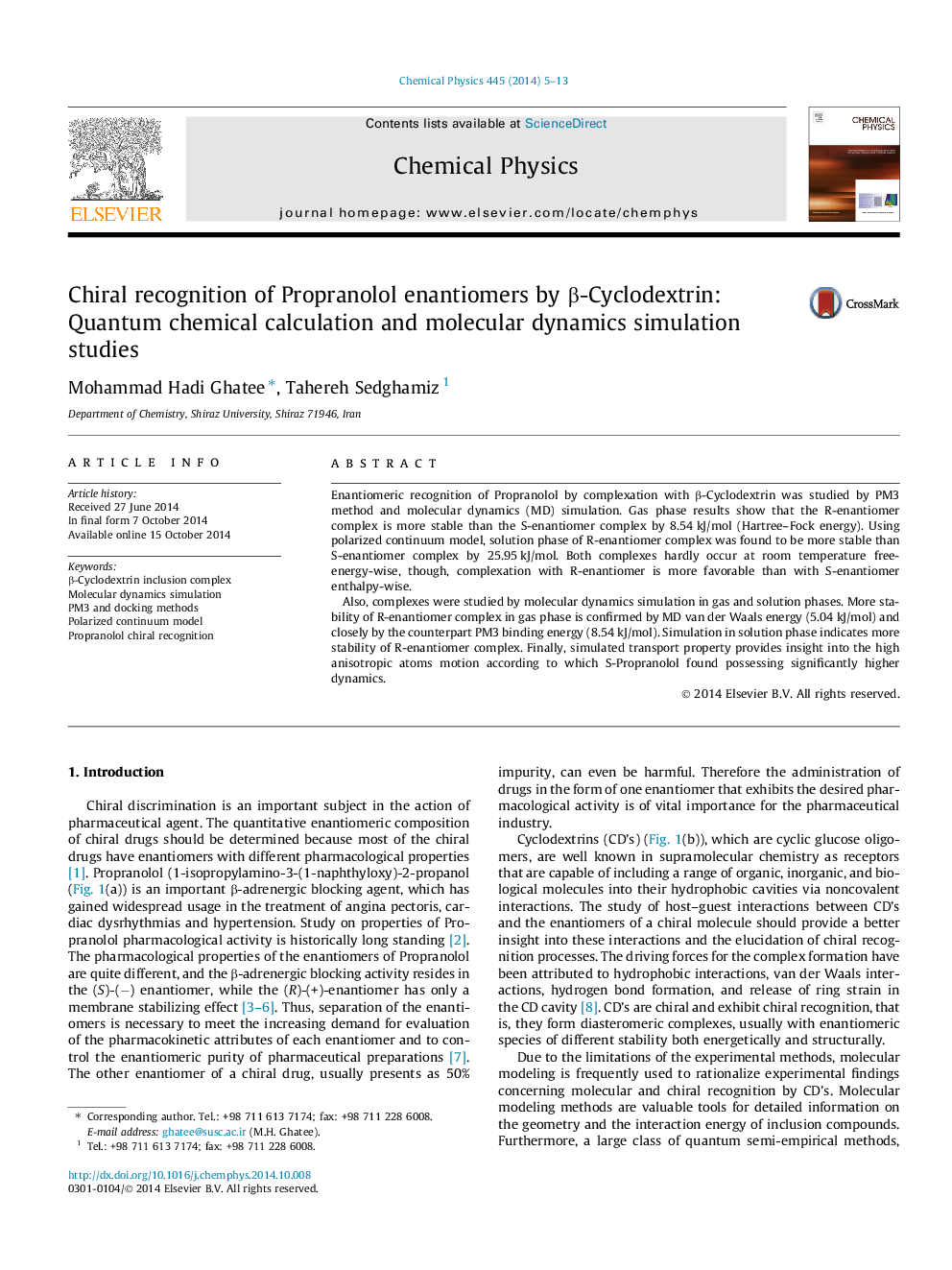| Article ID | Journal | Published Year | Pages | File Type |
|---|---|---|---|---|
| 5373506 | Chemical Physics | 2014 | 9 Pages |
â¢Enantiomeric recognition of Propranolol studied by β-Cyclodextrin complexations.â¢Complexes characterized by PM3 and molecular dynamics (MD) simulation methods.â¢Results support more stability of R-enantiomer complex in gas and in aqueous solution phases.â¢Gas phase complexes are unlikely free-energy-wise, though solution phase's are more likely.â¢Higher molecular diffusion in aqueous solution phase is inherent to S-enantiomer.
Enantiomeric recognition of Propranolol by complexation with β-Cyclodextrin was studied by PM3 method and molecular dynamics (MD) simulation. Gas phase results show that the R-enantiomer complex is more stable than the S-enantiomer complex by 8.54 kJ/mol (Hartree-Fock energy). Using polarized continuum model, solution phase of R-enantiomer complex was found to be more stable than S-enantiomer complex by 25.95 kJ/mol. Both complexes hardly occur at room temperature free-energy-wise, though, complexation with R-enantiomer is more favorable than with S-enantiomer enthalpy-wise.Also, complexes were studied by molecular dynamics simulation in gas and solution phases. More stability of R-enantiomer complex in gas phase is confirmed by MD van der Waals energy (5.04 kJ/mol) and closely by the counterpart PM3 binding energy (8.54 kJ/mol). Simulation in solution phase indicates more stability of R-enantiomer complex. Finally, simulated transport property provides insight into the high anisotropic atoms motion according to which S-Propranolol found possessing significantly higher dynamics.
Graphical abstractDownload full-size image
